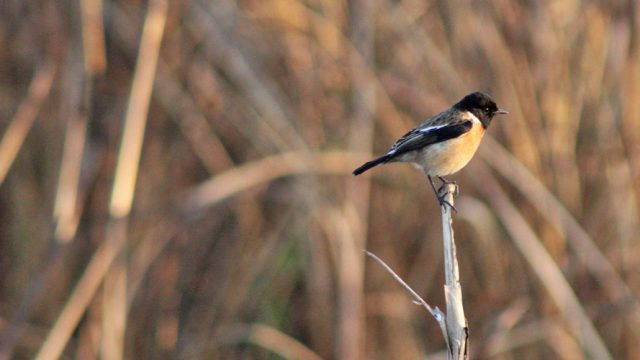Back in 1958, it was discovered that the deer species we know as swamp deer or barasingha needed protection. A small area in the Terai region of Uttar Pradesh’s Lakhimpur Kheri District was home to this rare and endangered species. Today we know of this place as Dudhwa National Park—one of the three protected areas (other two being Kishanpur Wildlife Sanctuary and Katarniaghat Wildlife Sanctuary) that together constitute Dudhwa Tiger Reserve.
The geographical location of Dudhwa allows for a thick cover of sal and teak forest, many horseshoe bends caused by the meandering rivers, and plenty of swamp areas due to the high water-table. Apart from being home to some of the most endangered animals like tiger, one-horned rhinoceros and hispid hare, Dudhwa National Park is also an excellent home to rare avian species like the Bengal Florican. For an avid birder, the park is a haven. More than 350 species of birds have been reported from Dudhwa National Park making it a hotspot for bird watching. Banke Tal, a natural waterbody is one of the most popular birding spots in the park. From resident birds to the winter migrants, the variety is astounding. The combination of swamps, thick forests and open grasslands makes for a healthy home to the avian population. Here is a pick of top five birds you should look out for while birding in Dudhwa National Park.
Bengal Florican

The Bengal Florican or Bengal bustard is native to the Indian subcontinent and Southeast Asia (Vietnam and Cambodia) and they are as critically endangered (IUCN Red List) as they come This species got completely wiped out in India, except for Uttar Pradesh and Assam. The tall terai grasslands are perfect homes for these birds. The fall prey to poaching and due to rampant destruction of grasslands to make lands fit for cultivation, their numbers are decreasing rapidly. It’s no wonder that they gained the title of the world’s rarest bustard.
Great Slaty Woodpecker

There’s no chance of mistaking this bird for some other when spotted. Very tough to spot in the wild, but when you do, you can make out the difference in size and appearance from the other species of woodpeckers. The great slaty woodpeckers are the larger species of woodpeckers; to untrained eyes, they may look like hornbills at first glance. The thick forest of Dudhwa National Park is an excellent home to these birds.
Black-necked Stork

They have Near Threatened status under IUCN Red List. The black-necked stork, a resident of Dudhwa National Park are mostly found in wetlands and fields foraging for fishes, amphibians, reptiles and even smaller waterbirds like coot, jacana and little grebe.
Great Pied Hornbill

Also known as the great hornbill, great pied hornbill is a delight to spot. They are mostly spotted on the top branches of fruit bearing trees. From a distance its casque and beaks are easily visible [the bird’s yellow colour is due to the preen gland secretion]. Hornbill reference is not new to our tribal culture and rituals.
Indian Golden Oriole

From a distance it is easy to mistake an Indian golden oriole for a Eurasian golden oriole. Though these two species are almost identical, one can distinguish the adults by the extended black stripe behind the eye. Other than the bright yellow colour, it is also known for its melodious call. Watch out for a flash of golden yellow flying by.




